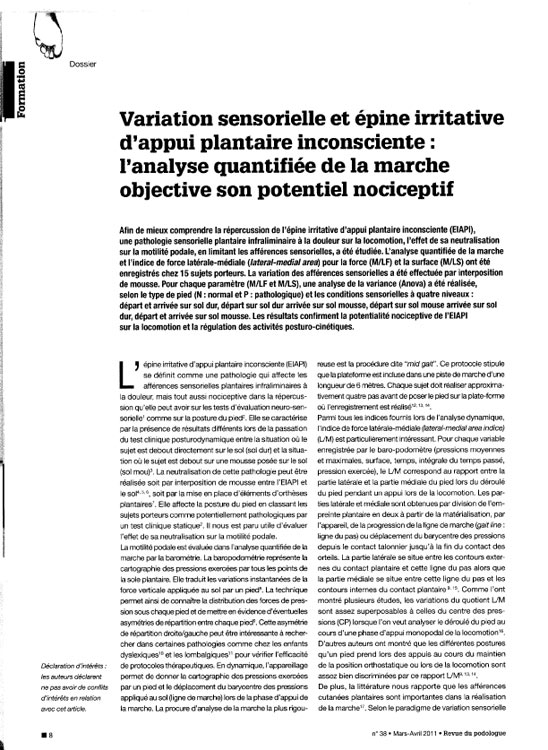Analysis of the NPT effect in women with chronic LBP : a pilot study
 Introduction : low back pain (LBP) is characterized by pain in the region between the last costal arches and the gluteal fold. It can occur due to several intrinsic and extrinsic factors, and it has a very high prevalence in adulthood, causing several problems which directly influence the quality of life. Neurosensory Postural Therapy (NPT) is a technique which uses manual neural stimulation to adjust muscle tone.
Introduction : low back pain (LBP) is characterized by pain in the region between the last costal arches and the gluteal fold. It can occur due to several intrinsic and extrinsic factors, and it has a very high prevalence in adulthood, causing several problems which directly influence the quality of life. Neurosensory Postural Therapy (NPT) is a technique which uses manual neural stimulation to adjust muscle tone.
Objective: The aim of the present study was to verify the effects of NPT on pain, mobility, flexibility, functionality, cardiac variability and body oscillation.
Methodology: Seven women over 20 years old were recruited, which were evaluated before and after the technique, which consisted of pressure on the upper and lower roots of the sciatic nerve at 3 points for 60 seconds.
Results: The mean pain score was 2.71 ± 1.38 and 1.35 ± 1.18, with a value of p = 0.02. For the Schöber test we obtained a mean of 21.93 ± 1.36 and 22.34 ± 1.30 cm in the pre- and post-test with p=0.01. No statistical difference was found in the Rolland Morris questionnaire. The electromyography obtained statistical difference in the analysis of the gluteus medius with p=0.02. Significant results (p=0.0001) were found in the lateral evaluation by the stabilometry and the HF/LF ratio showed difference with p=0.03 in the pretest and after 30 days.
Conclusion: The technique of NPT has benefits in the parameters studies, demonstration being a fast technique with period of efficiency.
Phillipe Villeneuve, Lisandro Antonio Ceci, Rodolfo Borges Parreira, Larissa Gulogurski Ribeiro, Andressa Panegalli Hosni, Marcos Paulo Polowei Rolão, Jossinelma Camargo Gomes,
Thais Barbosa De Oliveira, Mário Cesar da Silva Pereira, Afonso Shiguemi Inoue Salgado, Ivo Ilvan Kerppers
Manual Therapy Posturology & Rehabilitation Journal – 22 November 2017

